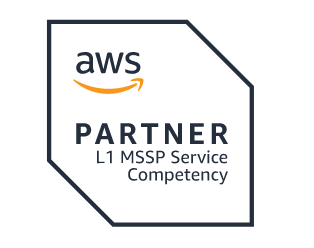How Insurance Companies Can Prepare For Open Enrollment 2019 With Kubernetes
Originally published September 20, 2019 by Matt Ferrari, Co-Founder & Former CTO, ClearDATA at Forbes.com
Open enrollment marks the longest, most grueling three months for anyone working in the health care insurance industry.
During this peak period, consumers are searching for the gold-star plan that provides the best coverage at an affordable cost. This makes competition spike among the plethora of health insurance companies in the United States, whether independent insurers managing small regions or as part of the Health Insurance Marketplace offering coverage in all 50 states, such as Humana and Cigna Health.
Add to this the many insured members who rush to get services, appointments and exams at the end of the covered year while their deductible is met and in play. This creates a double whammy on insurance companies’ capacity without even considering Medicaid which continually adds or drops insurers’ rolls due to qualifying events such as job loss, divorce and other life-changing events.
In many places, enrollment is inefficient — causing insurers, the federal government and consumers to face confusion, delays and increased costs.
It’s fair to say through the chaos of open enrollment, payers must look for a strategic way to sell their insurance in the most efficient way even while their backend system is overloaded.
Though enrollment challenges may seem insurmountable at times, health care IT and innovation divisions can make a positive impact on the challenges that payers face. Today, there are systems and processes an insurer can employ to help ease the marketplace experience. For example, the public cloud.
Today, all three public clouds, including Amazon Web Services, Google Cloud Platform and Microsoft Azure, are widely adopted by payers of all shapes and sizes. While there are many benefits to operating on the cloud, the ability to rapidly scale compute resources during open enrollment before resuming normal operations in February allows insurance companies to take advantage of the elastic nature of the technology.
Secondly, the public cloud also allows insurance companies to leverage emerging technologies that address enrollment challenges and simplify deployment, such as Kubernetes, an open-source container environment that automates many processes. This technology is used largely by IT teams and developers in every industry, most recently including health care.
If you follow my Forbes profile, you know I’ve spoken about Kubernetes before and the benefits it provides to health care organizations: from giving system administrators much more control over their environment to automating processes and saving time, and even achieving better security implementation.
Containers and Kubernetes have changed how enterprise organizations approach application deployments. Many developers are pro-Kubernetes because it allows you to create “pods” that can group container components and allow you to share resources across multiple machines instead of relying on a single machine. In short, Kubernetes extends — and at the same time simplifies — management of containers to support large, distributed resources.
The good news is many insurance companies already deploy Kubernetes in a number of ways and can expand use to reap greater benefits, including:
Cost Optimization
From November to early January, member sign-ups and new plan processing nearly triples. During this surge, insurance companies can leverage Kubernetes to increase on-demand services during this season while decreasing compute resources to reduce spend on weekends. Simply rotate services out on an as-needed basis, addressing high peak seasonality and achieving cost savings simultaneously.
In essence, Kubernetes lets insurance companies turn off the lights when they don’t need them and on when they need to shine as bright as Times Square.
Securely Transmit Patient Data
From a security viewpoint (and with all of the health care breaches in 2019 alone, what insurer today isn’t concerned about security?) with Kubernetes, you don’t have to patch services over and over. You simply apply security patches to the Kubernetes pod or cluster environment itself.
Take the member portal, for example. Any time members log in to manage claims, see results of their clinical lab work, or search for a doctor in their network, that portal can be running on a microservice architecture, managed by Kubernetes to mitigate risk for security vulnerabilities. Another application of Kubernetes is utilizing case management to communicate between payer and patients, patient and provider, or provider and payer which all needs to be done securely.
Mitigate Potential Outages
Kubernetes, like other container platforms, can be built to have highly available clusters which, when implemented correctly, could limit any outages and ultimately build a seamless deployment experience. By treating your container environments as replaceable assets, you don’t have to worry about maintaining Linux or Windows operating systems over time, thereby eliminating the need to email your members about scheduled outages during maintenance windows. No one enjoys that email.
Looking ahead, in the near future, I envision payers utilizing Kubernetes applications for revenue cycle management from an enterprise scheduling perspective to process invoices, member changes and approvals. But for today, open enrollment begins on November 1, so why not take advantage of the technology proven to help increase efficiency, strengthen security and reduce spend.


